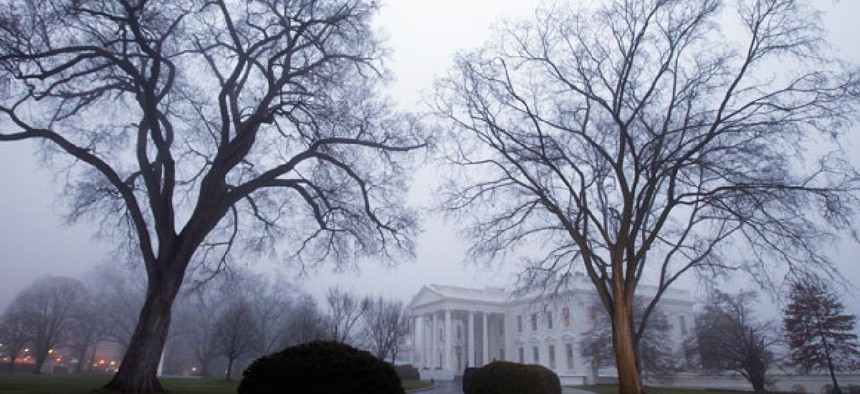White House Regulatory Office Too Quiet About Its Activities, Study Finds
Absent records leave OIRA vulnerable to charges it bows to industry pressure, group says.
A notable portion of meeting records, oral communications and public comments related to agency rulemaking are absent from the White House Office of Information and Regulatory Affairs website, according to a new study that faults OIRA for less-than-full transparency during the last 12 years.
Since 1981, the office has been under executive order to review the costs and benefits of all proposed agency rules that exceed a certain threshold of economic impact. Consumer, environmental and workplace safety advocates worried, however, that secrecy in the reviewing process could delay or water down rules in ways favorable to industry lobbyists, according to a capsule history from the Center for Effective Government (formerly OMB Watch).
An agreement by the Reagan administration—converted to an executive order under President Clinton—required OIRA to publish logs of its meetings with outsiders, which have been posted on the Office of Management and Budget website since 2001. The office regularly updates its Regulatory Review Dashboard graphic.
In its recent study, the center examined all rulemaking logs from the Transportation and Labor departments as well as the Environmental Protection Agency. “The staggering discrepancy among reported meetings, written comments, and substantive conversations suggests OIRA's review of rules remains unreasonably opaque despite its stated disclosure policy,” the study found.
OIRA made records available for 647 meetings between October 2001 and January 2013, it concluded, but made available only 28 written comments from outside parties, and staff reported only nine substantive phone calls from outside parties.
“This discrepancy is especially pronounced when looking at disclosed meetings and communications related to EPA rules,” the center wrote. “From 2001 to 2013, OIRA disclosed 581 meeting records, just 26 written comments from outside interests, and only nine phone conservations. While one does not expect an equal number of meetings, comments, and phone calls for every topic, discrepancies this large are suspicious.”
The center found that disclosure of meetings had improved since 2002, but called for improved compliance. “Transparency and disclosure are crucial to the regulatory process,” it wrote. “To ensure that this process serves the public and to avoid charges that its staff bend to industry pressure, OIRA needs to follow the disclosure requirements set by executive order almost two decades ago. Congress also has a role: the House and Senate should ensure the meetings and communications that influence the regulatory process are accurately documented and publicly available to all Americans.”




